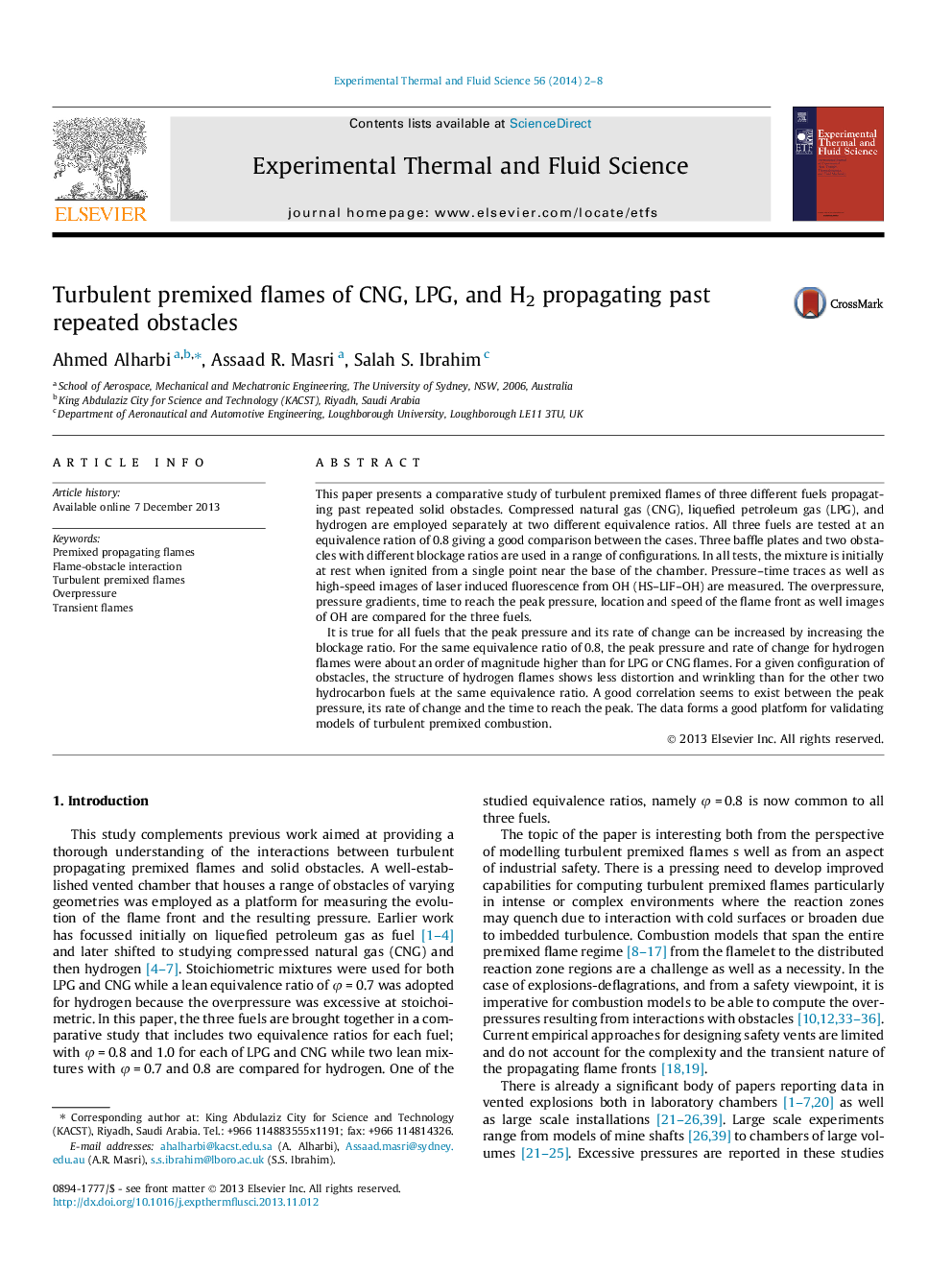| Article ID | Journal | Published Year | Pages | File Type |
|---|---|---|---|---|
| 651684 | Experimental Thermal and Fluid Science | 2014 | 7 Pages |
•The paper presents findings for premixed flames propagating past a range of solid obstacles.•Three fuels are tested, namely CNG, LPG and hydrogen with an equivalence ratio of 0.8 being common to all three fuels.•Results for overpressure, location and speed of flame front are presented and compared for the fuels and for a range of configurations.•Hydrogen results in pressures and flame propagation speeds that are about an order of magnitude higher than LPG and CNG.•The flame fronts for hydrogen, as marked by LIF–OH, appear laminar compared to those for LPG and CNG fuels.
This paper presents a comparative study of turbulent premixed flames of three different fuels propagating past repeated solid obstacles. Compressed natural gas (CNG), liquefied petroleum gas (LPG), and hydrogen are employed separately at two different equivalence ratios. All three fuels are tested at an equivalence ration of 0.8 giving a good comparison between the cases. Three baffle plates and two obstacles with different blockage ratios are used in a range of configurations. In all tests, the mixture is initially at rest when ignited from a single point near the base of the chamber. Pressure–time traces as well as high-speed images of laser induced fluorescence from OH (HS–LIF–OH) are measured. The overpressure, pressure gradients, time to reach the peak pressure, location and speed of the flame front as well images of OH are compared for the three fuels.It is true for all fuels that the peak pressure and its rate of change can be increased by increasing the blockage ratio. For the same equivalence ratio of 0.8, the peak pressure and rate of change for hydrogen flames were about an order of magnitude higher than for LPG or CNG flames. For a given configuration of obstacles, the structure of hydrogen flames shows less distortion and wrinkling than for the other two hydrocarbon fuels at the same equivalence ratio. A good correlation seems to exist between the peak pressure, its rate of change and the time to reach the peak. The data forms a good platform for validating models of turbulent premixed combustion.
Graphical abstractFigure optionsDownload full-size imageDownload as PowerPoint slide
